The upcoming quarter-finals of the UEFA Champions League (UCL) are the most balanced in many years when considering various financial indicators. In the following article, we'll delve into a financial analysis of the qualified clubs, offering insights into the economic balance of the pairings in the quarter-finals.
Perfectly balanced
Among the top 13 teams in terms of total operating revenues, eight have advanced to this stage of the UCL. Notably absent from the quarter-finals are heavyweights like Manchester United FC, Liverpool FC, Tottenham Hotspur FC, and Chelsea FC, due to the limit of four English teams, and Juventus FC, due to their ban from European competitions.
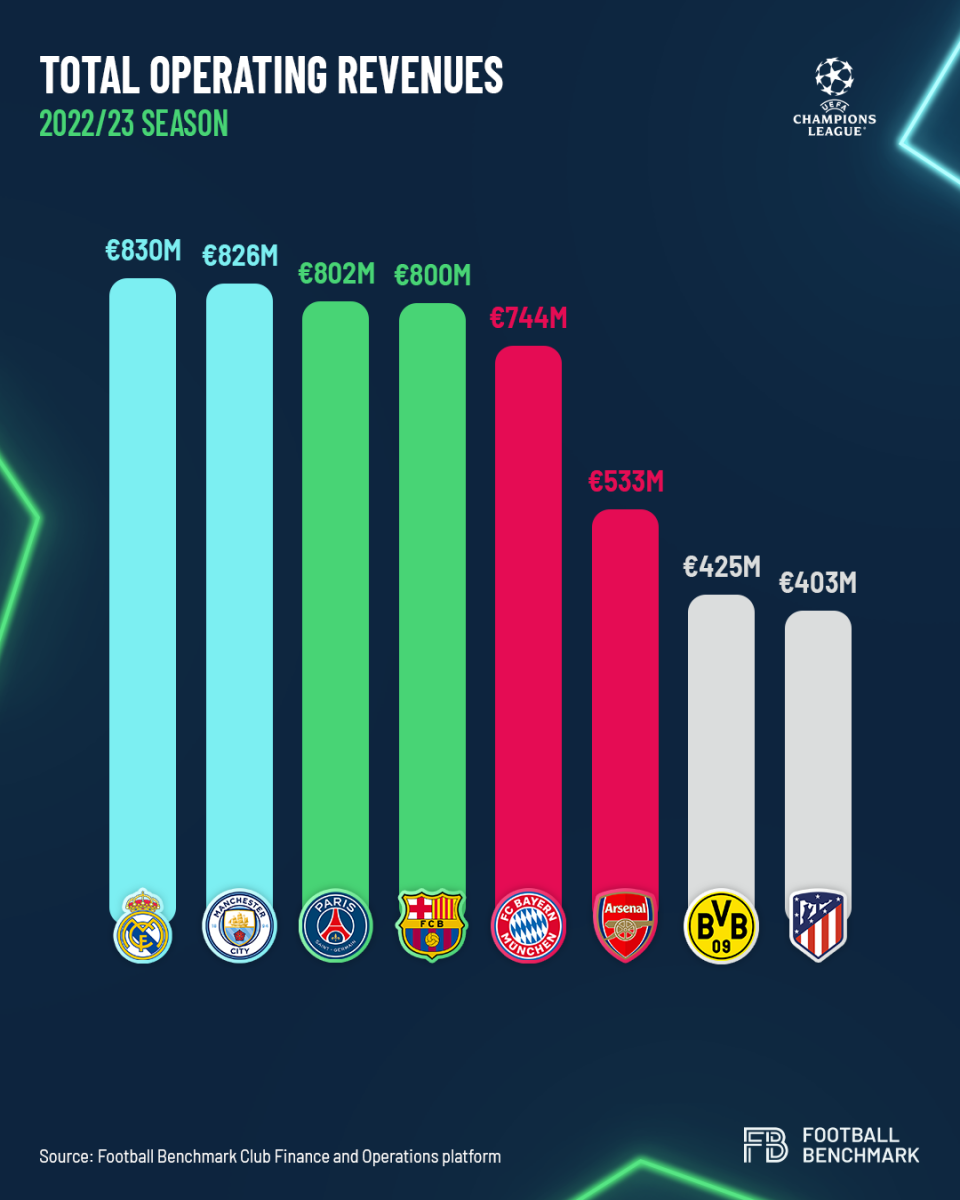
Examining the operating revenues, the quarter-final matchups boast an unprecedented level of equilibrium: Real Madrid CF and Manchester City FC have a EUR 4 million gap in their 2022/23 total operating revenues, whereas Paris Saint-Germain FC and FC Barcelona exhibit a narrower difference of only EUR 2 million. The most significant contrast lies between Arsenal FC and FC Bayern München, with a EUR 211 million divide, while Borussia Dortmund and Atlético de Madrid show a more modest gap of just EUR 22 million. Remarkably, four teams boast operating revenues exceeding EUR 800 million each.
Surveying the leagues contributing the most clubs to the quarter-finals, LaLiga take the lead with three representatives, followed closely by the English Premier League and the German Bundesliga, each boasting two clubs, while Ligue 1 contribute one club to the mix. Notably, unlike the previous edition, no Italian club managed to advance beyond the round of 16, despite the presence of three teams in the prior season (FC Internazionale Milano, AC Milan, and SSC Napoli).
When shifting focus from revenues to staff costs among the eight clubs, a glance at the consecutive pairings in the chart reveals an equally remarkable balance. Even in this aspect, we witness the most evenly matched contests that the draw could produce.
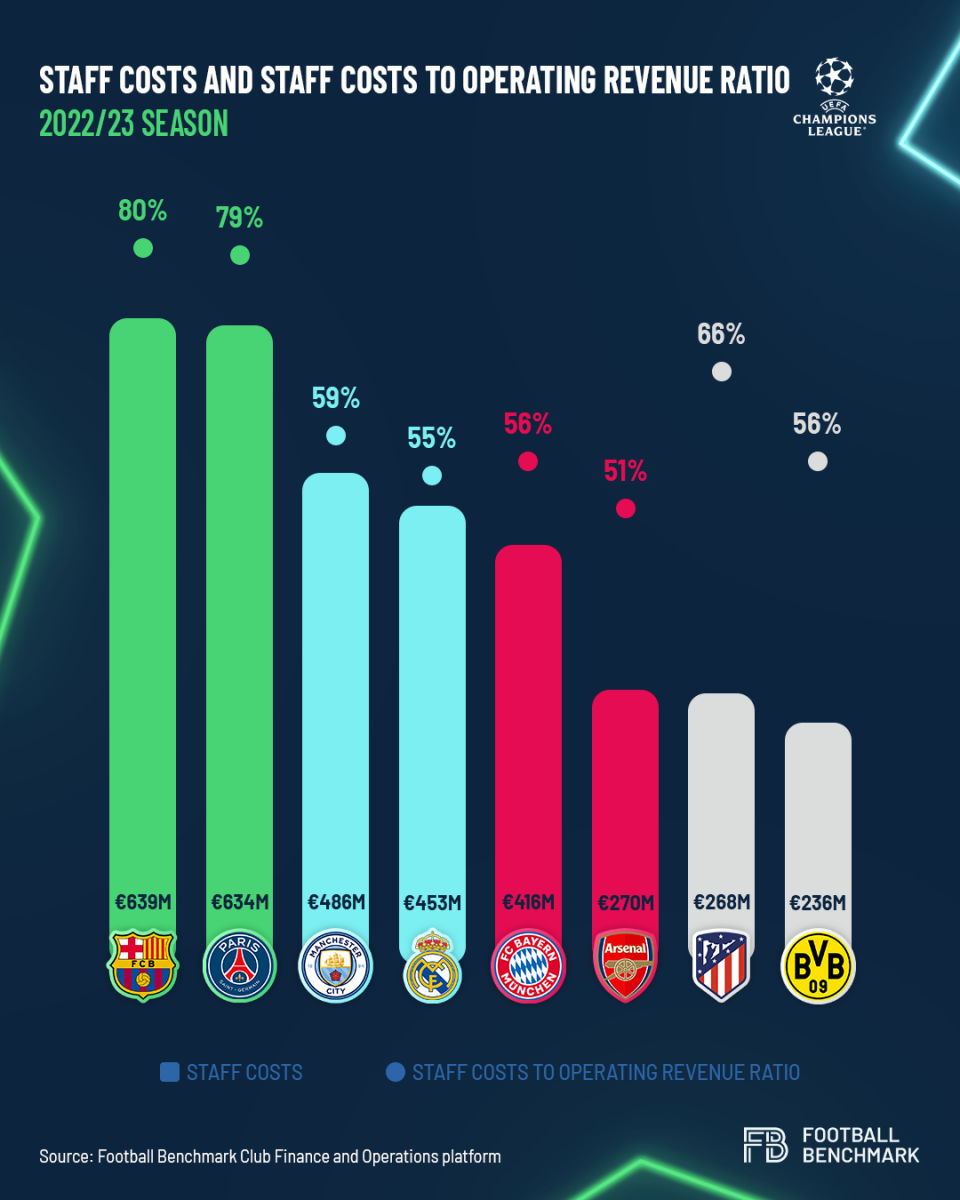
FC Barcelona and Paris Saint-Germain FC stand out as the clubs with the highest staff costs among the quarter-finalists, a distinction that extends to their positions across Europe as a whole. What sets them apart further is their staff costs to operating revenue ratio, which surpasses the recommended threshold of 70%. Among the quarter-finalists, five boast a staff costs to operating revenue ratio of less than 60%. Notably, Arsenal FC emerged as the club with the most conservative financial approach, boasting the lowest ratio among its peers at 51%.
Squad market values
The upcoming matches in the quarter-finals promise to be a showcase of balance, also in terms of squad market value. Among the matchups, the largest gap in squad value, a staggering EUR 248 million, is observed between Manchester City FC and Real Madrid CF. Interestingly, the two clubs combined boast nine players valued at over EUR 100 million each: from the “Citizens”, Erling Haaland, Phil Foden, Rodri, and Julián Álvarez, while from “Los Blancos”, Jude Bellingham, Vinícius Júnior, Rodrygo, Federico Valverde, and Aurélien Tchouaméni.
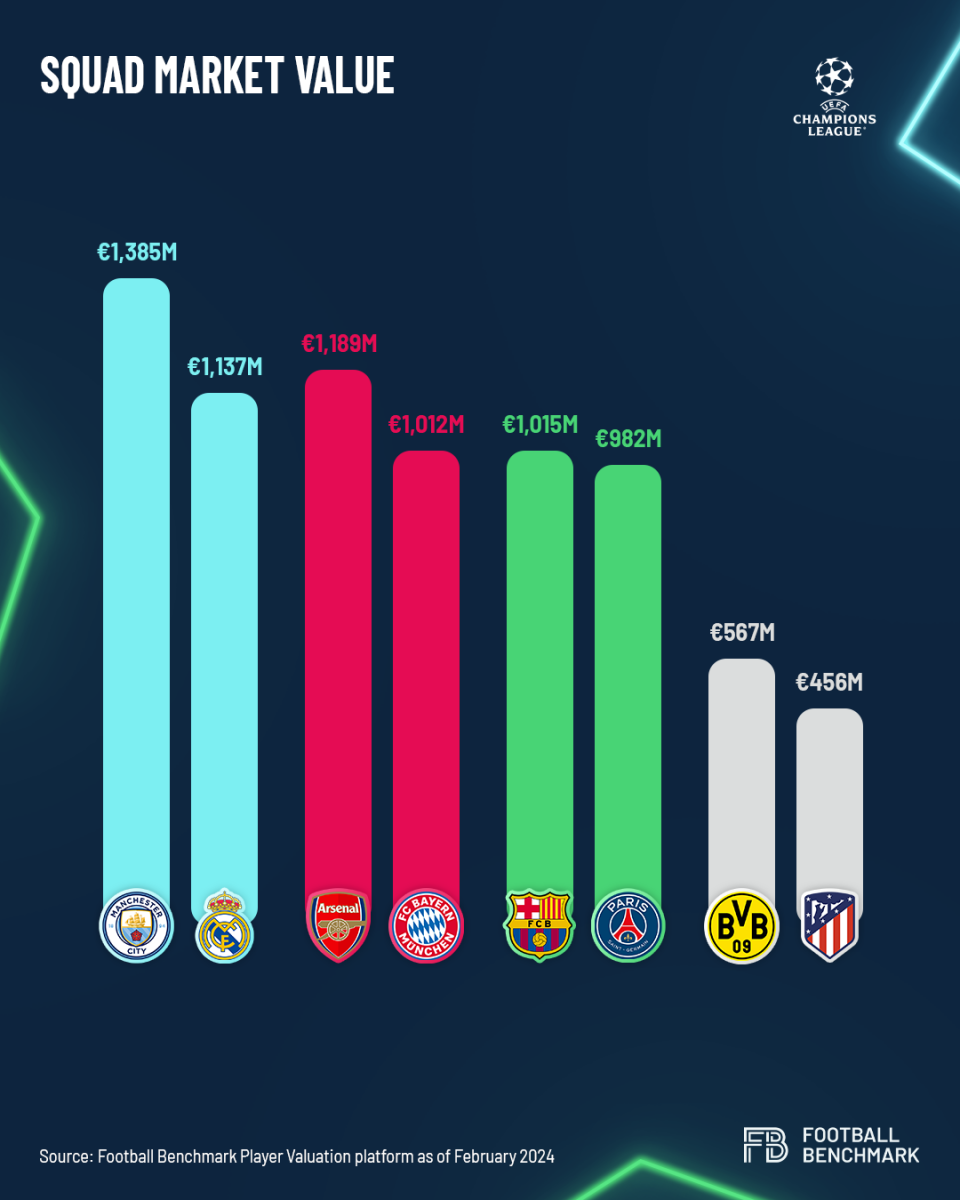
When examining the squad values of the quarter-finalists, it's notable that five clubs have surpassed the billion-euro mark. Paris Saint-Germain FC falls just slightly below this threshold, though they face a unique challenge due to Kylian Mbappé's expiring contract. For more insights on this matter, you can refer to one of our previous articles.
On the other hand, a substantial disparity separates Borussia Dortmund and Atlético de Madrid from the rest of the pack. To provide context, the squad value of Manchester City FC surpasses that of Atlético de Madrid by over three times.
Now let’s have a look at the most valuable players of the quarter-finals, as the spotlight is expected to shine on the stars of each team, with several players commanding staggering valuations. Remarkably, for five out of the eight teams, the MVP in terms of value exceeds EUR 100 million. Notably, players like Erling Haaland and Jude Bellingham come close to the EUR 200 million mark.
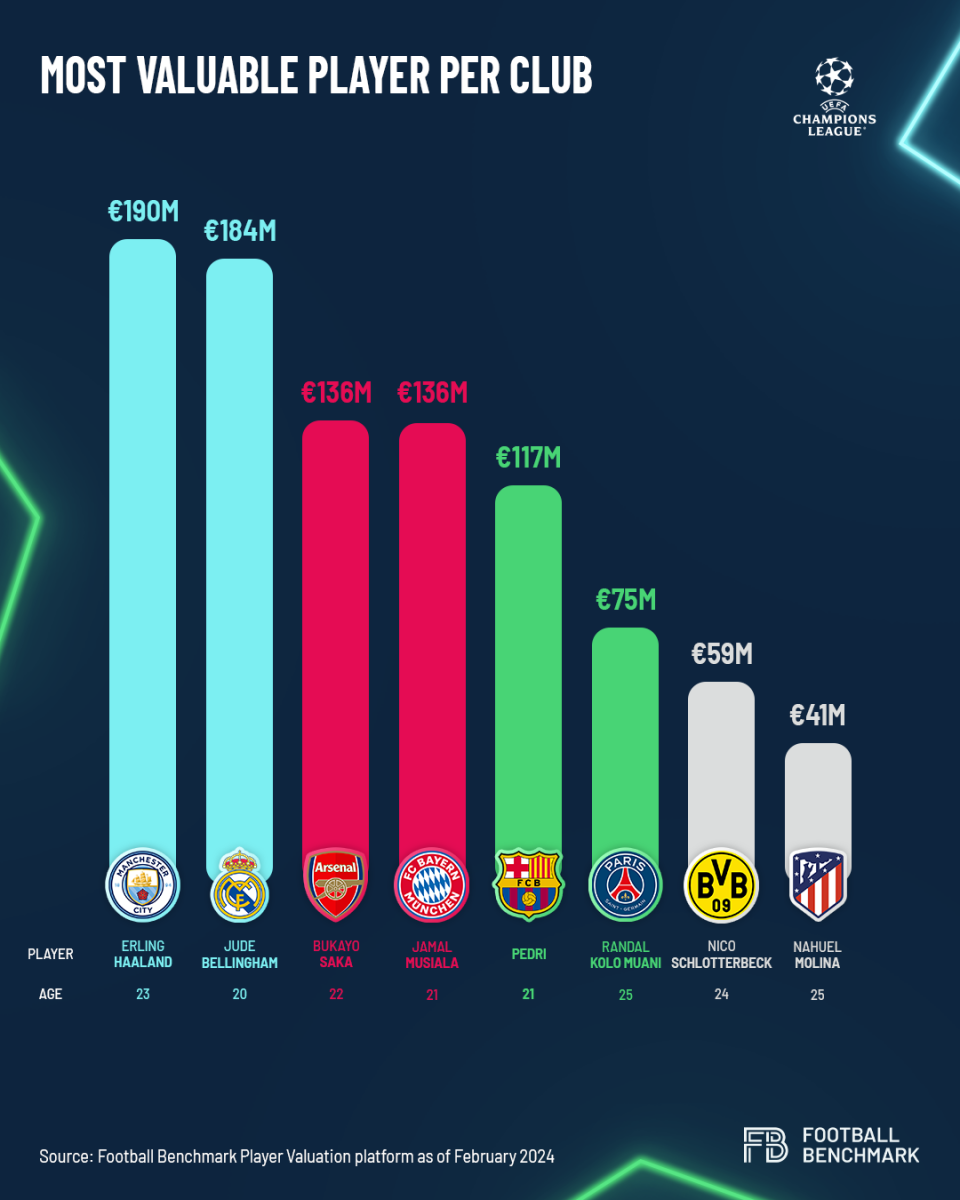
What adds to the intrigue is the youthfulness of these players, all of whom are aged 25 years or younger. Among them, Bellingham stands out as the youngest MVP at just 20 years old. However, it's worth mentioning that Paris Saint-Germain FC's MVP would undoubtedly be Kylian Mbappé if not for his contract situation. The theoretical value assigned to him, assuming a renewal with Paris Saint-Germain FC, would soar to EUR 235 million - the highest among all players in contention.
2023/24 UEFA Revenues
The following chart provides an estimation of each club's UEFA revenues for the current season, factoring in their advancement to the quarter-finals. However, it does not include potential earnings beyond this stage of the competition. The distribution comprises four key components: an access fee (EUR 15.6 million), a coefficient-based variable (ranging from EUR 1.1 million to EUR 36.4 million), a market pool (estimated to align with the previous season's figures), and performance bonuses (such as EUR 10.6 million for reaching the quarter-finals).
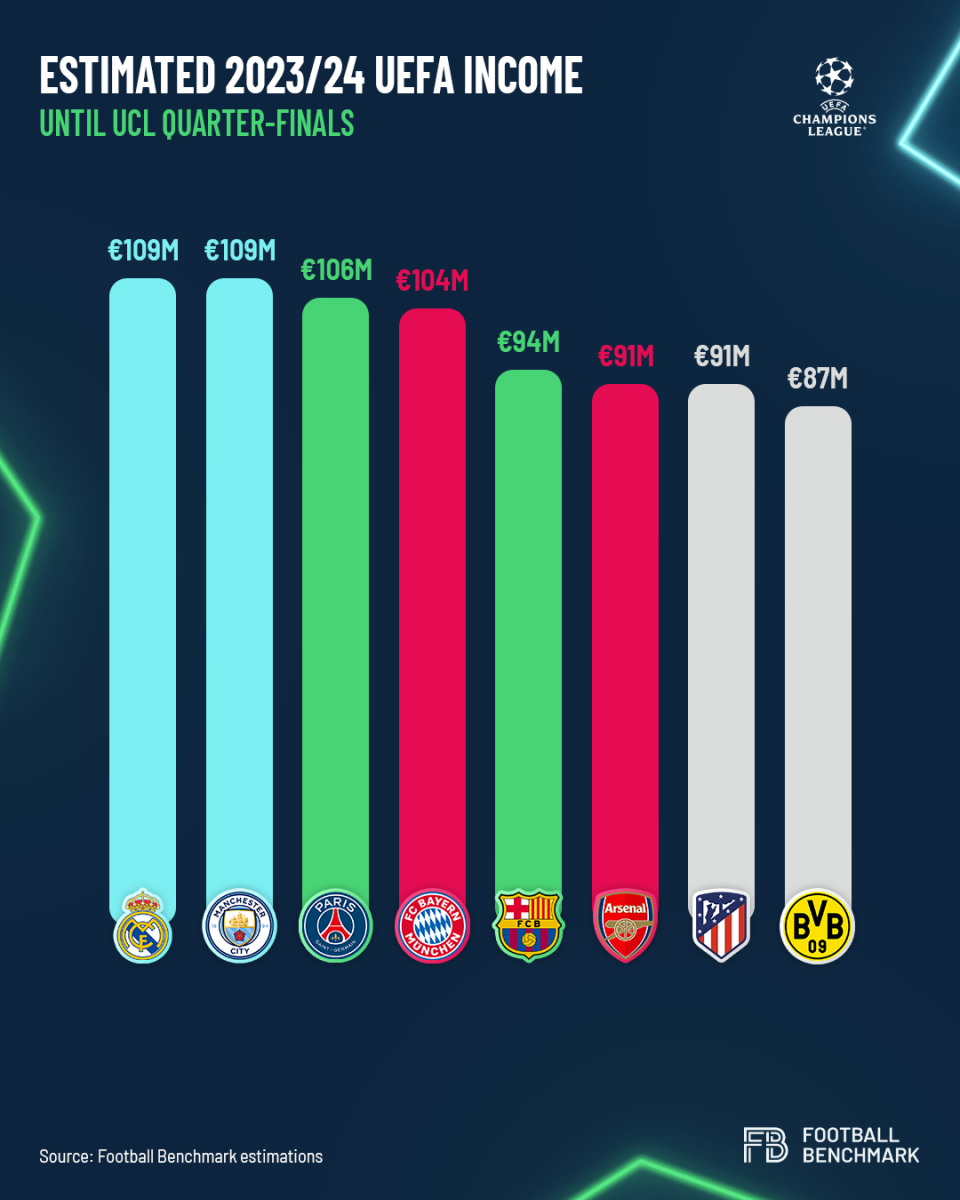
According to this estimation, four clubs have already surpassed the EUR 100 million mark in UEFA income for their journey in this edition of the Champions League, while the other four clubs are close to this threshold. This once again underscores the significance of clubs qualifying for European competitions, particularly the Champions League, and aiming for a deep run. Notably, an extended cup run not only guarantees higher UEFA revenues but also leads to increased stadium revenues, thanks to a greater number of home games played throughout the season.
Sponsorship deals
Real Madrid CF take the lead in the jersey value ranking, combining both their technical sponsor and main shirt sponsor deals. “Los Blancos” hover near the impressive EUR 200 million threshold with their annual agreements with Adidas (EUR 120 million per year) and Emirates Airline (EUR 70 million per year). Real Madrid CF and FC Barcelona stand out as the only two clubs whose technical sponsorships exceed EUR 100 million. Among the eight clubs, three are sponsored by adidas, three by Nike, and two by Puma, highlighting the dominance of these sportswear giants in the football sponsorship landscape.
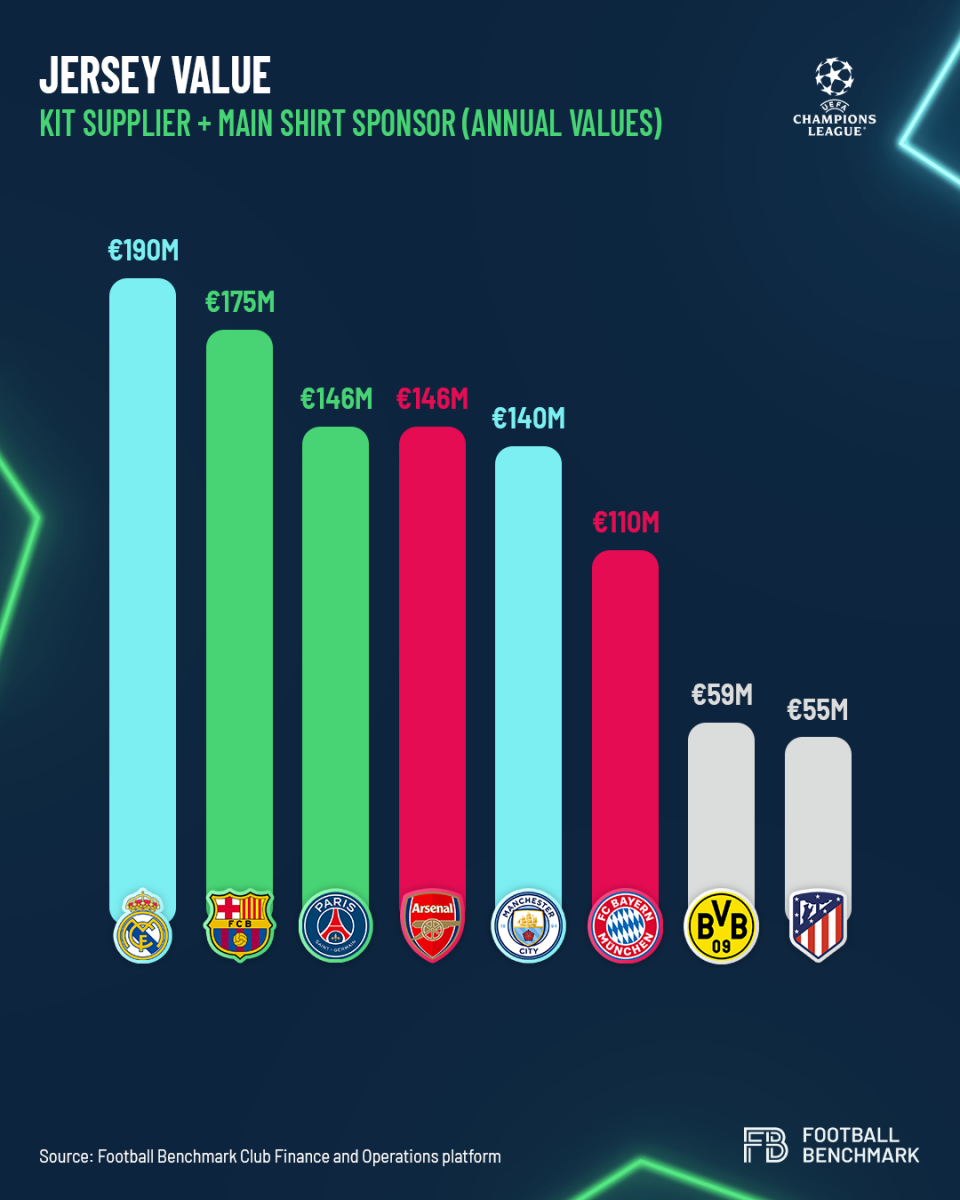
In terms of main shirt sponsorships, a striking trend emerges, with five out of the eight clubs being sponsored by airlines. These include Emirates Airlines, which sponsors both Real Madrid CF and Arsenal FC, Qatar Airways (Paris Saint-Germain FC), Etihad Airways (Manchester City FC), and Riyadh Air (Atlético de Madrid).
Social media followers
In the realm of social media, six out of the eight teams advancing to the quarter-finals boast an impressive following of over 100 million across various platforms. Borussia Dortmund and Atlético de Madrid are the exceptions to this trend.
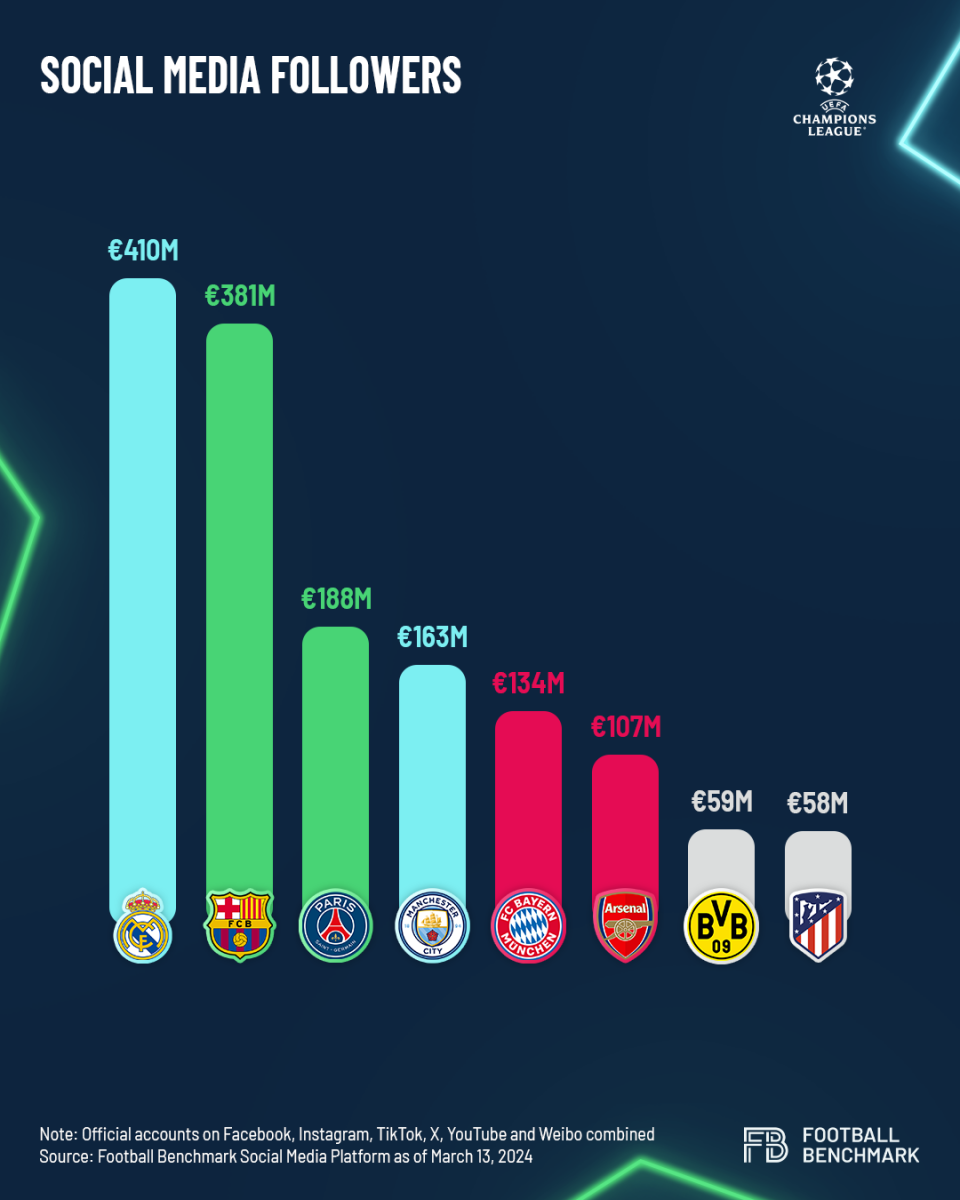
Meanwhile, the two Spanish giants appear to be in a league of their own, with Real Madrid CF amassing over 400 million social media followers, while FC Barcelona is on the brink of surpassing this monumental threshold.
Profitability
Among the quarter-finalists, five out of eight teams have managed to secure net profits in the 2022/23 season, with Atlético de Madrid also nearing the break-even point. However, Arsenal FC and particularly Paris Saint-Germain FC find themselves in deficit. Despite facing losses in the previous season, PSG have shown significant improvement, with their losses reduced by 70%.
It's worth noting that FC Barcelona's record net profit is partially attributed to extraordinary income amounting to EUR 793 million, primarily stemming from the sale of future TV rights.
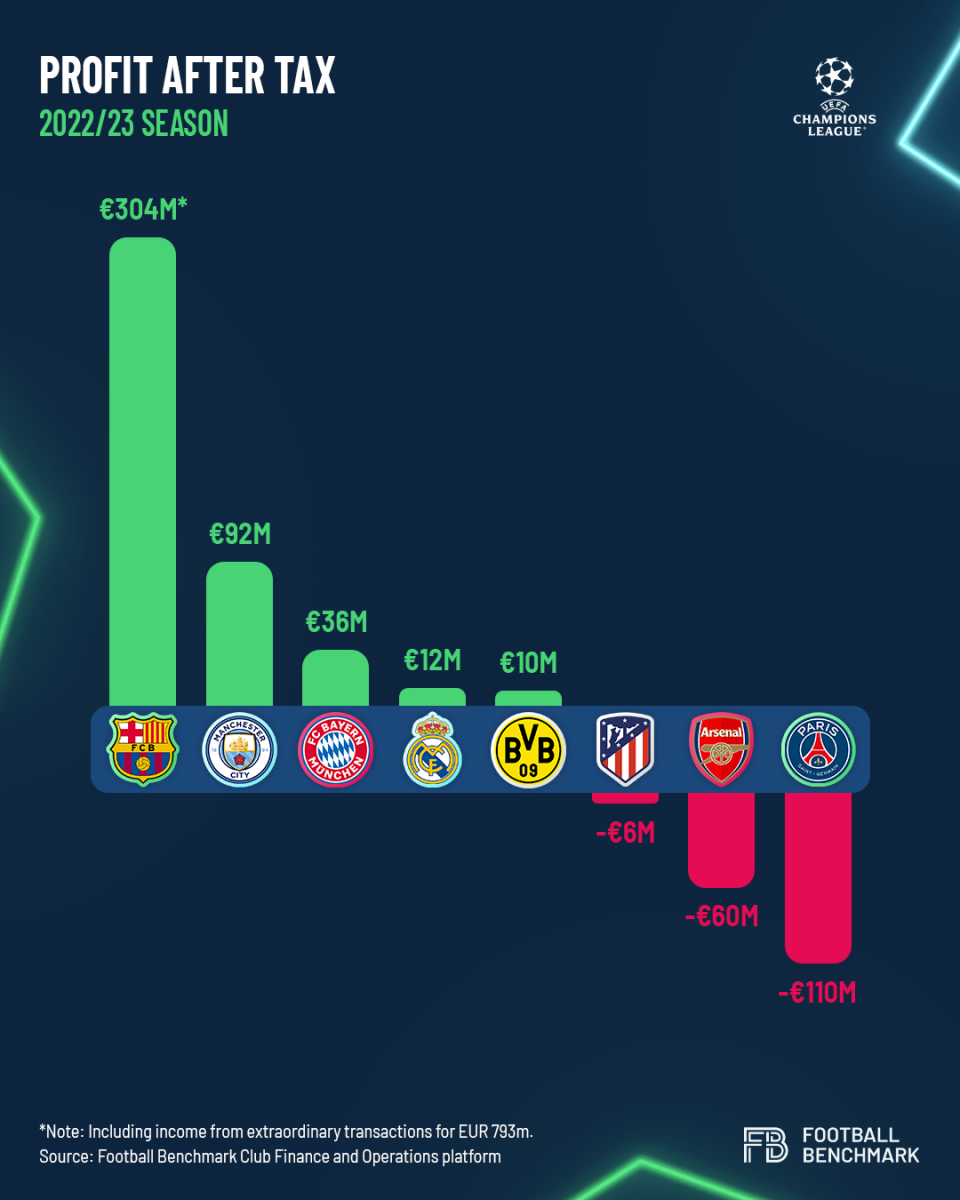
This season's UEFA Champions League edition has not only delivered highly competitive quarter-final matchups, as indicated by the financial metrics of the 2022/23 season, but it also holds further intrigue: the final installment of the tournament in its current format could culminate in a Spanish domestic showdown (El Clásico or Derbi Madrileño) or perhaps a German classic between FC Bayern München and Borussia Dortmund (Der Klassiker).

.png)

